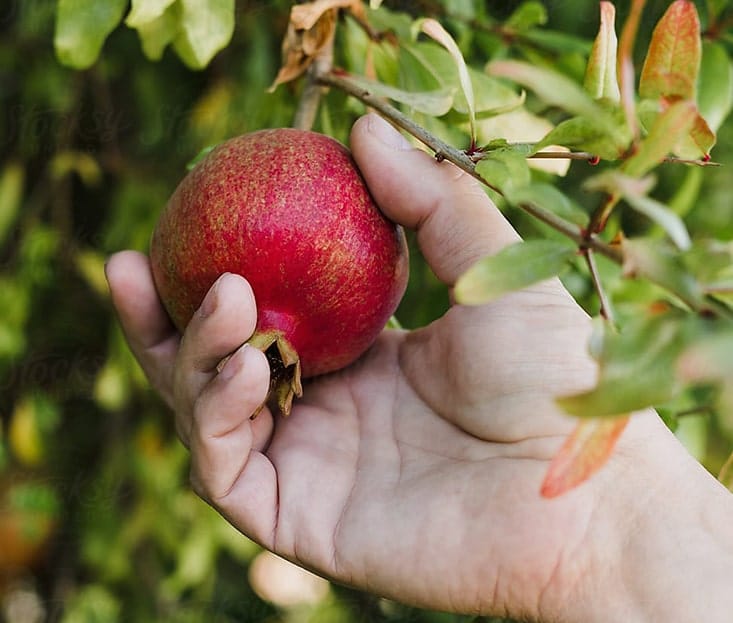
Pomegranate
Quick Access :
General information
General
Information :
Information :
The pomegranate come from within the region extending from Iran to northern India. A shrub or small tree are growing 5 to 10 m (16 to 33 ft) high, the pomegranate has multiple spiny branches and is extremely long-lived. Moreover, the pomegranate fruit husk has two parts: an outer; hard pericarp, and an inner; spongy mesocarp (white “albedo”), which comprises the fruit inner wall where seeds attach. Botanically, the edible fruit is a berry with seeds and pulp produced from the ovary of a single flower. The fruit is intermediate in size between a lemon and a grapefruit; 5–12 cm (2–5 in) in diameter with a rounded shape and thick, reddish husk.

Iran is the second largest producer and largest exporter of pomegranates in the world. The fruit’s juice and paste have a role in Iranian cuisine, and refreshment bars. Pomegranate skins may be used to stain wool and silk in the carpet industry.
Product benefits
Pomegranate
Benefits :
- Having Antioxidants properties
- Lowering Risk of Heart Disease
- Containing Vitamin C
- Preventing Cancer
- Protecting against Alzheimer’s disease
- Helping digestion
- Having extreme Anti-inflammatory properties
- Loaded With Important Nutrients
- Helping to Fight Prostate Cancer
- Being Useful against Breast Cancer
- Balancing blood pressure
- Helping to Fight Arthritis and Joint Pain
- Helping to Treat Erectile Dysfunction
- Helping to Fight Bacterial and Fungal Infections
- Helping to Improve Memory
- Improving Exercise Performance
How to Harvest
How To
Harvest :
Native from Iran to Himalayas in northern India, pomegranates grown in mild temperate to subtropical climates in regions with cool winters and hot summers. Drought tolerant, the trees literally prefer a semi-arid climate, planted in deep, acidic loam with good drainage. Don’t expect to start harvesting pomegranates fruit until 3-4 years after planting. Once the trees have reached that age of maturity, the fruit will ripen about 6-7 months after flowering – generally making harvest season for pomegranates in September for early ripening varieties and continues through October for later ripening cultivars.


During the time harvesting pomegranate pick the fruit when is fully ripe and a deep red in color since it does not continue to ripe post-harvest. They begin picking pomegranates when the fruit makes a metallic sound by tapping it with the finger.
They cut the fruit from the tree, not pull it off. Cutting the fruit should be as close as possible to the branch, taking the stem with the fruit.
They cut the fruit from the tree, not pull it off. Cutting the fruit should be as close as possible to the branch, taking the stem with the fruit.
Packaging
Packaging :
We can provide pomegranate in each quantity that our clients want, there is no limitation regarding weight, destination and packaging type.

